Biolaminin 111 LN (LN111)
Human recombinant laminin 111
Biolaminin 111 is a full-length and animal-origin free human laminin 111 product, which is an important extracellular matrix component for many cell types in vivo. Biolaminin 111 has been successfully used for hepatic and neural differentiation.
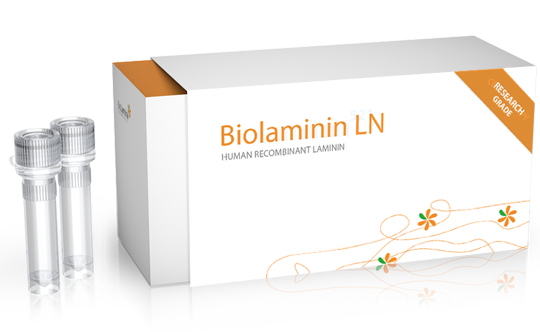
A biologically relevant culture environment
Laminins 111 and 121 are widely expressed during embryogenesis, and are important for early epithelial development and differentiation of the epiblast.
Biolaminin 111 LN (LN111-02 and LN111-0501) supports the survival, proliferation, and differentiation of many different cell types in vitro. However, its distribution after birth is restricted to only a few tissues, such as the brain and kidney. Many of the cultivated cell types would not encounter this protein naturally in vivo and it is advisable to match your specific cell type to the laminin naturally expressed by this cell, improving the cell culture.
During development, Riechert’s membrane supporting the extraembryonic trophoblasts express laminin 111. Reichert’s membrane is essential for epiblast differentiation, which is essential for the formation of the three embryonic germ layers by pluripotent cells in the inner cell mass.
In the adult, laminin α1 chain expression is relatively restricted and is only present in some epithelial basement membranes, and primarily found in tissues such as the eye, liver, and kidney, whereas hardly expressed at all in endothelial, adipose, nervous, or muscle tissues (Ekblom, 2003; Virtanen, 2000).
In addition to inducing different cell signaling cascades, laminin 111 is known to co-signal with various growth factors in a cell type dependent manner. This may be an explanation for the major biological effects that laminin 111 exerts on a wide selection of cell types.
A defined, full-length component of undefined matrices
Laminin 111 is the laminin isoform present in the tumor extract sold under the trade name Matrigel. Matrigel is produced by mouse Engelbreth-Holm-Swarm (EHS) sarcoma cells and is an undefined mix of extracellular proteins of animal tumor origin. Laminin 111 component initiates spontaneous differentiation of stem cells.
By coating your plate with recombinant Biolaminin 111 (LN111) instead of Matrigel, you support your cells with a defined and animal origin-free substrate. LN111 enables better control of your cell-matrix and experiments where spontaneous differentiation is desirable.
If the goal is to establish efficient self-renewal and expansion of pluripotent stem cells, Biolaminin 521 (human cells) or Biolaminin 511 (mouse cells) should be used. This is because laminin 521 and laminin 511 are the natural laminins for hES and iPS cells and do not cause spontaneous differentiation.
Recommended applications

Hepatocytes and hepatoblasts
Biorelevant culture of liver cells on Biolaminin substrates Several laminins play a vital role in liver progenitor cell-mediated regeneration The […]View application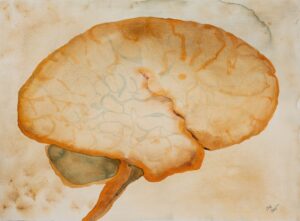
Neural cells
Biorelevant culture of neural cells on Biolaminin substrates Laminins are widely expressed in the nervous system and are essential for […]View application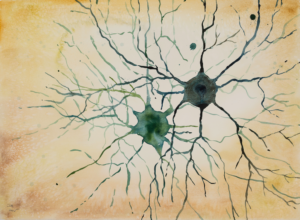
Dopaminergic neurons
Biorelevant culture of dopaminergic neurons on Biolaminin substrates Biolaminin culture supports GMP-compatible differentiation of dopaminergic cells Parkinson’s disease (PD) is […]View application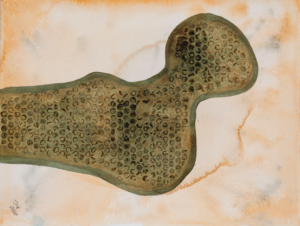
Bone and cartilage cells
Biorelevant culture of bone and cartilage cells on Biolaminin substrates High expression of laminin isoforms in the bone microenvironment Bone cells, including include […]View application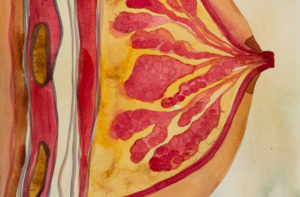
Mammary gland cells
Biorelevant culture of human mammary cells on Biolaminin substrates Laminins have both overlapping and unique functions in the mammary gland tissue Mammary […]View application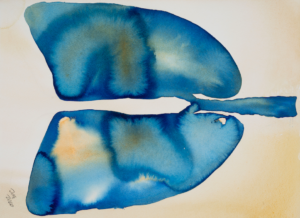
Lung cells
Biorelevant culture of lung cells on Biolaminin substrates Laminin expression in lung Laminin is key proteins in the basement membranes of the airway […]View application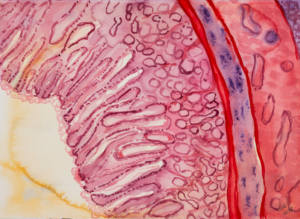
Intestinal cells
Biorelevant culture of intestinal cells on Biolaminin substrates Laminin expression in the intestine The small intestine contains mucosal epithelial invaginations called […]View application
Key features
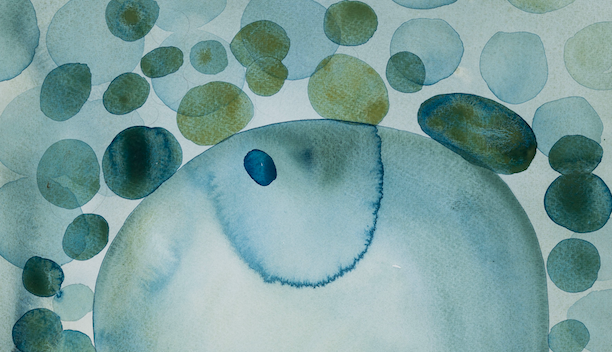
Coating plates
1. Slowly thaw recombinant laminins at +4°C before use.
2. Dilute the thawed laminin stock solution with 1xDPBS containing Ca2+ and Mg2+.
3. Add the diluted laminin solution to tissue culture-treated cultureware for a final coating concentration of 0.5-2 μg/cm2. The optimal coating concentration is cell line-dependent.
4. Seal the plate (e.g. with Parafilm®) to prevent evaporation and incubate at +2°C to +8°C overnight. If a more rapid coating is required, incubate at +37°C for 2 hours. Make sure the laminin solution is spread evenly across the surface. Note that the laminin matrix will be inactivated if let dry.
Important notes
- The laminin stock solution is long-term stable when stored at -20°C to -80°C. Please refer to the product-specific CoA for shelf life details.
- Repeated freeze-thawing should be avoided. If desired, the laminin stock can be dispensed into working aliquots and stored at -20°C to -80°C. Thawed, undiluted laminin stock is stable for at least 3 months when stored at +2°C to +8°C under aseptic conditions.
- Avoid long exposure of the protein to ambient temperatures.
- For your convenience, the coated plates can be kept for up to 4 weeks when stored aseptically at +2°C to +8°C.
- The protocol can easily be made totally defined and animal origin-free with your choice of culture medium and enzyme.
- Before start, all solutions used for cell passaging should be aliquoted in sufficient amounts and pre-warmed at +37°C, 5% CO2.
Product name
Biolaminin 111 LN
Product code
LN111
Declaration
For research use only
Storage
-20°C to -80°C
Concentration
0.1 mg/ml
Appearance
Clear, colorless, buffered solution with a
pH of 7.2 with 10% glycerol and 0.02% NaN3
Shipping condition
Dry Ice
Protein name
Laminin 111 (Laminin-1)
Classification
Animal origin-free, human recombinant protein
Product application
General cell culture substrate. Expressed and secreted by trophectoderm and some epithelial basement membranes.
Size guide
Not sure how much laminin you need? To make it easy, we have created a tool where you can calculate the amount needed for your experiments. Just choose culture well format and fill in the desired coating concentration to see the amount required.
Please see the coating instructions for concentration and volume guidelines.